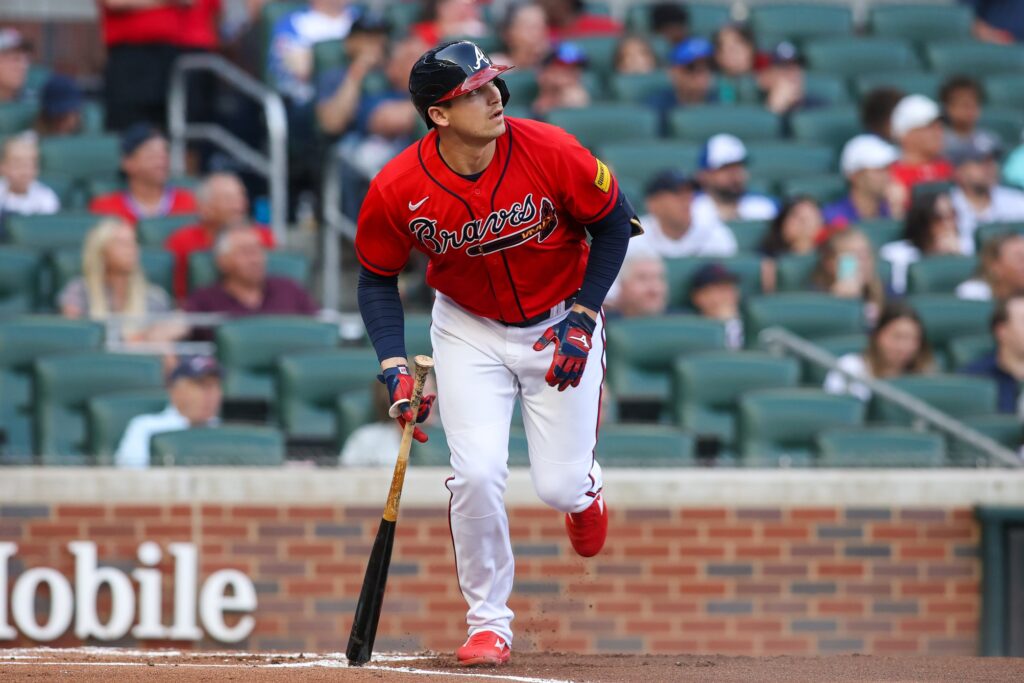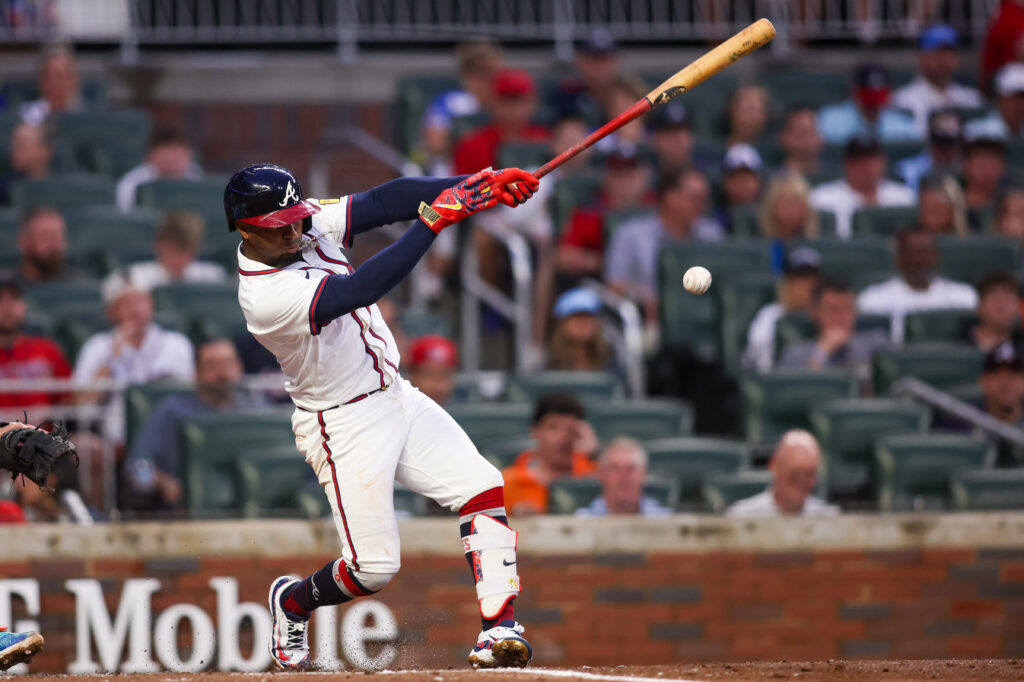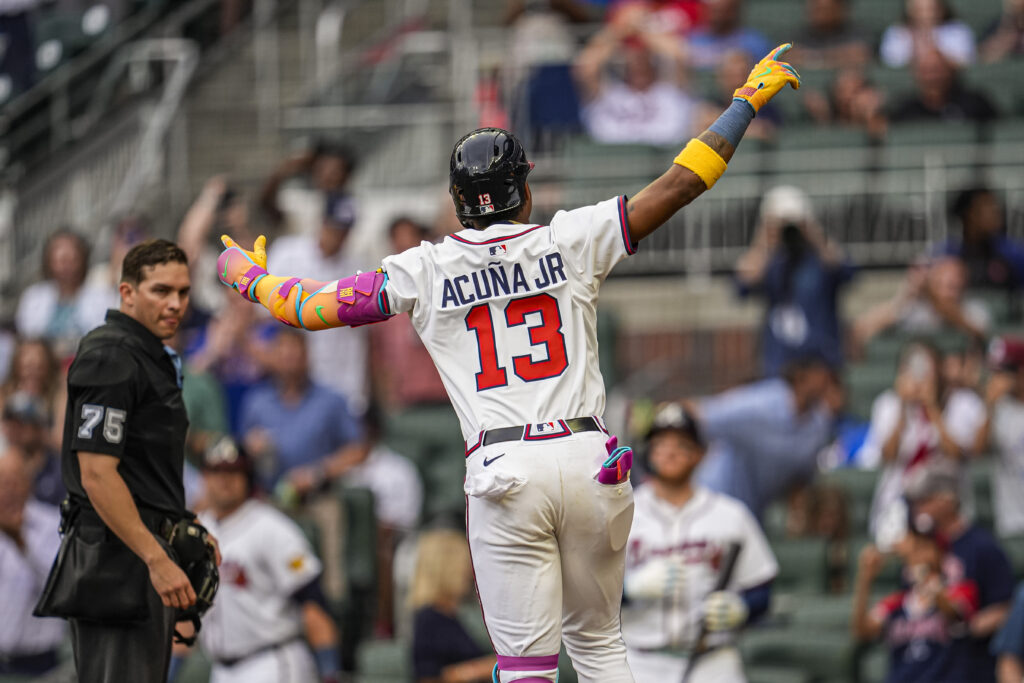After Austin Riley launched not one but two long balls – both sailing over 450 feet – Travis d’Arnaud commented that he’d never hit even one ball that far, let alone two in the same game.
On a talent-laden team such as the Atlanta Braves in 2023, outstanding performances might get lost in the shuffle. Unless your name is Ronald Acuna Jr. So, that’s why it’s time to get granular and appreciate the beast known as Austin Riley.
Appreciating Austin Riley, Overture
Act One, A Double Debut Of Brevity
It is no easy task to fill the shoes of a Hall of Famer. Just ask Anthony Volpe if the shadow of Derek Jeter doesn’t loom large over the New York Yankee middle infield. Even though Jeter retired almost a decade ago, the Yankees in the interim have yet to find a set solution at the most important defensive position on the diamond.
The Atlanta Braves didn’t have to wait as long for the heir apparent to present himself after Hall of Fame third baseman Chipper Jones retired in 2011. That individual is current Atlanta Braves third baseman, 26-year-old Austin Riley.
Even more noteworthy is the unusually challenging environment in which he debuted in the year before the 2020 pandemic-shortened season. He only got 200+ plate appearances in his rookie year of 2019. So, he effectively played two partial seasons as his first two seasons in the major leagues.
Baseball players, possibly more than anyone, flourish under a paradigm of custom and routine. More than a few heralded prospects who debuted in the couple of years leading up to the shortened 2020 season have demonstrated some difficulty finding their footing.
Whether it’s the uncertainty of the stresses of what might happen monetarily or simply the inconsistencies of biomechanics giving way to poor technique, the mini-generation of pandemic debuts dealt with exponentially more pressure than the bevy of stud rookies coming up and dominating in 2023.
His rookie season in 2019 saw Riley mash a robust .245 ISO and hit 18 home runs over 297 plate appearances. But this came with an untenable 36% strikeout rate, along with a bottom-dwelling 63% contact rate. The 70 grade Raw Power displayed fully, but so did the below-average 40 scouting marks of his Hit tool.
The shortened 2020 season found Riley making adjustments – cutting his strikeout rate to 23.8%, which is more than acceptable for someone with as much dominant carry in his swing. His Barrel rates were both excellent in his first two seasons, though the home runs and ISO diminished in his sophomore season.
These first two years paint a terrific case study of a player’s process becoming better, while the results lag – where his contact rate improved nearly ten points to 72.6%, but his batting average and weighted runs created plus continued to be below average in his second season.
Act Two, World Champ
Some players might press and tweak and spin themselves into circles of confusion trying to put it all together after such a mixed first couple of seasons.
And while those first two seasons look almost like strange twins of each other, his next two seasons in 2021 and 2022 start to paint a picture of remarkable high-level production with consistent performance indicators that show a player both establishing steady production and leveling up.
Riley played in almost every single game in the 2021 and 2022 seasons, garnering a similar number of plate appearances in the high 600s. His strikeout rates were 25.4% and 24.2% respectively to go along with respective 7.9 and 8.2% walk rates.
His power performance peripherals also echo through both seasons. His ISO, which measures overall slugging numbers beyond home runs, were both elite at .227 and .255. And, his home run rates were also ridiculously consistent between the seasons where he hit 33 in 2021 and increased that number to 38 in 2022, which also came with a few dozen more plate appearances.
Examining his plate discipline metrics, he had an identical 30.9% outside swing rate in both seasons which marked improvement year over year from his rookie season.
His contact rates were also virtually the same, and this is where the granularity helps – because Riley actually improved his In-Zone Contact by almost 4%. This is where Riley starts to defy the scouts’ low grades of his hit tool and why he’s capable of slashing close to .300 every year, as he did in 2021.
The final noteworthy indicator that Riley’s process runs along the elite spectrum may be found in his expected numbers from 2022. wOBA utilizes linear weights to measure the quality of how a player reaches base as opposed to just frequency or quantity. His wOBA was in the top 2% of the league, and Statcast says he should’ve performed even better by results, as his expected wOBA (xwOBA) was top 3%.
Act Three, Heart Of A Dynasty
The Atlanta Braves currently rank top three in home runs, runs scored, .OPS and batting average against starting pitchers. When a team possesses the fortune the Atlanta Braves now do in having Ronald Acuna lead off every game – and he didn’t even play in the team’s World Series Championship – one might get carried away with casting another decade-long potential dynasty for this team.
But there are certainly reasons to believe the current iteration of the Braves will continue to be annual favorites for the postseason.
One reason to buy stock in this idea is the player who bats in the heart of the Braves’ order, Austin Riley – who did play in the 2021 World Series, during which he hit .320 with three RBI.
Riley has been praised for his work ethic and ability to make adjustments going back to his high school days. Such was the case when Riley put up those World Series numbers after scuffling in the National League Championship Series to the tune of a lackluster .200 batting average and 659 .OPS.
Adjustments are the name of the game in baseball, and a player’s ability to adjust and readjust, once the league figures out vulnerabilities, determines that player’s longevity and ultimately his payday.
Riley is demonstrating successful adaptation patterns once again in 2023. His performance in April led to a 30% strikeout rate with five home runs and a .253 average. The month of May has seen him cut that strikeout rate to a very good 22% while launching four bombs and hitting .276.
It seems that becoming more aggressive at the plate is paying off, because these noticeable improvements have come while he’s cut his walk right in half. In fact, his weighted runs created plus metric was actually better in April when he was striking out more. So, it might be said that Riley is being productive even when he’s not putting the ball in play.
All of this is to say, if continuing along this trajectory, Riley is sure to put up as good of a season as he has the past couple. And to go granular one last time, he may exceed expectations, as he’s improved his Outside Swing Rate by 4%.
A selective Riley picking pitches he wants to destroy should continue to pick apart opposing teams’ pitching.
Main Image: Brett Davis-USA TODAY Sports



